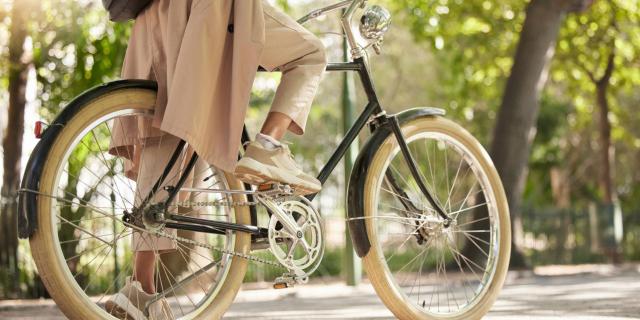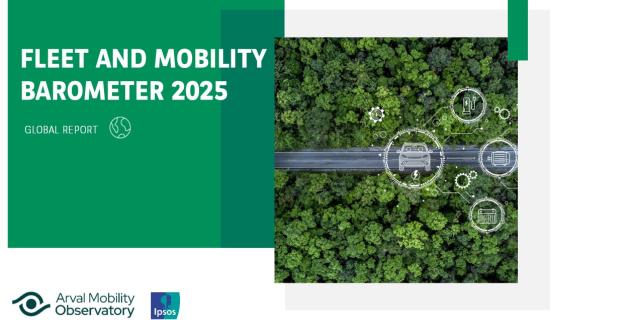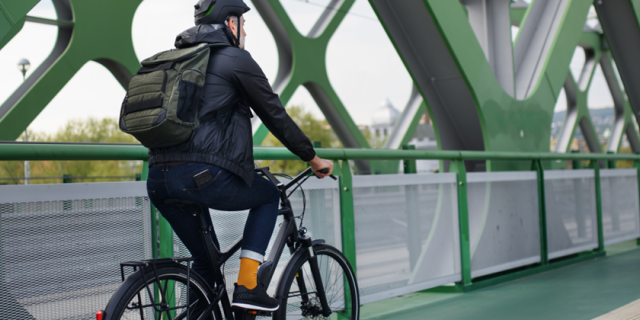Mobility in the Suburbs: Trends and Challenges in Europe
Paris, the 23rd of December
Today, 75% of European population is urban and should grow by 11% until 2050. 66% of the metropolitan population lives in the suburbs of Europe’s 99 major metropolitan areas. What are the trends and challenges in Europe of the Mobility in suburban areas?
That is the question we asked to Anne Aguiléra, Deputy Head of the Department of Planning, Mobility and Environment at the University Gustave Eiffel in France, and senior researcher at the City, Mobility and Transport Laboratory (LVMT).
Arval Mobility Observatory: First of all, could you please define what is the urban sprawl?
Anne Aguilera: Urban sprawl is a general term which refers to the spread of a city into the area surrounding it. It is a physical expansion of cities outside previous urban footprints, which changes people distribution between core centres and their suburbs. In most European cities, a growing share of households live in the suburbs, mostly in detached or semi-detached housing. Urban sprawl does not only concern people but also employment, shops and services.
Urban sprawl is projected to continue in the next decades. It could particularly be fuelled by the pandemic due to the rejection of excessive density together with the growth of teleworking. Indeed, on the one hand, fewer working days make higher commutes more acceptable; on the other hand, working from home increases the desire for a bigger living space and a garden. Previous research, before the pandemic, already demonstrated that teleworkers lived in average further from their place of work than non-teleworkers due to higher acceptance of longer commutes.
Arval Mobility Observatory: What are the patterns of urban sprawl?
Anne Aguilera : The intensity and the patterns of urban sprawl vary across urban areas. On the one hand the distribution of inhabitants between historical cores and their suburbs varies between European cities. On the other hand, patterns of sprawl in the suburbs also differ depending on history and land-use and transport policies. Sprawl can be radial, around the core centre, or concentrated along the main transport axis, or characterized by mixed rings of developed and undeveloped land. As a result, urban areas can be monocentric or more polycentric, with several subcentres located at different distances from the core centre. The subcentres are generally close to the main transport axis. They concentrate a high share of suburban inhabitants and suburban jobs and have a better ratio of jobs compared to population than the small villages surrounding them.
Arval Mobility Observatory: Urban sprawl is fuelled by many economic, political technological and societal factors. What are these factors?
Anne Aguilera : They include firstly the lack of affordable housing in core cities, especially for families with young children, secondly the expansion of road network and access to private car ownership, and thirdly aspirations for a lifestyle that reconciles urban and rural living. Surveys of suburban inhabitants reveal that most of them are satisfied with their location and do not wish to move, or would move further if necessary. The main explanations are the high cost of housing in city centres but also the rejection of density and pollution.
Moreover, most suburban inhabitants feel close enough to urban amenities such as jobs and commercial areas, even if it means frequent and long car journeys. Most importantly, they strongly value their living environment and especially the space, their garden and the proximity to nature. Finally, even if urban sprawl is still fuelled by people and especially families living the city centre, a growing share of suburban inhabitants were born in the suburbs and have their family and friends there.
As a result, contrary to common belief, suburban areas are not only a place for couples with young children. Suburban population is becoming more and more diverse and unlike some previous expectations, many people do not move back to the core city as they become older. This is important to keep in mind when considering current and future mobility challenges in these areas.
Arval Mobility Observatory: What is the impact on mobility? What are the mobility patterns?
Anne Aguilera: The relationship between the sprawling of cities and the growing use of the private car has been a topic of great interest among researchers and planners for decades. It has now been largely demonstrated that urban sprawl is responsible for car-oriented travel patterns marked by a heavy impact on the environment. However, mobility patterns are particularly difficult to change due to close interrelations between suburban lifestyles, especially the use of the private car, and low-density land-use patterns.
Mobility survey data show that, due to contrasting land-use patterns and also transport infrastructures and services, core cities and suburban inhabitants have very different mobility patterns. Therefore, mobility in suburban areas is facing very specific challenges requiring appropriate solutions that are not in general the solutions that work for city centre inhabitants who live in very dense and mixed environments. Suburban lives are very dependent upon the private car. Researchers talk about car dependency since the private car is not completely a choice. It is the condition sine qua non that makes suburban living possible, especially for people living outside subcentres. A first huge difference between city centres and their suburbs is car ownership. Car ownership is higher in the suburbs, where most households have at least one car, and sometimes two or even three cars.
Higher car ownership in the suburbs also means higher car use and also higher daily distances compared to core area. The main explanation is that many suburban dwellers work outside their municipality of residence, but not in the city centre. Contrary to what is often thought, many suburban workers now work in suburban locations that are not well served by public transport. Hence, they need a car to get to work every day. Moreover, they need a car to get to shopping centres, to accompany children to their extracurricular activities, etc. Indeed, due to zoning, the destinations are dispersed and the car is generally the more efficient transport mode.
Most car trips in the suburbs involve one person (the driver) travelling alone or, if there are two persons or more in the car, they belong most of the time to the same household. In other words, carpooling is not well developed. The main reasons are high private car ownership, the dispersion of origins and destinations, and, above all, the organizational constraints associated to the regular sharing of rides with a stranger or a neighbour. This does not mean that carpooling is not practiced in the suburbs. However, it remains very unfrequent, especially to get to work. It is mainly based on local networks (friends, colleagues, etc.), and not yet on apps. Carpooling apps suffer from poor knowledge and a lack of drivers.
Despite high car dependency, people do not travel only by car in the suburbs. They also walk a lot. Mobility surveys show that walking is the second transport mode after the private car. Walking is not only associated to leisure. People also walk within their municipality of residence to make different activities, for instance to get to local shops or to the doctor, when the distances are low and the sidewalks well designed. In comparison, even if most suburban households own at least one bike and often two or more, bicycle use remains low. However, it depends on cultural factors and of course safe infrastructures provision. For instance, car free bicycle highways have been built or are in project in some countries such as Norway and Denmark, and they are attracting a growing number of daily commuters. Finally, transit use remains low on average in the suburbs, especially in small municipalities away from public transport hubs. Moreover, transit is mainly used by students and commuters working in the core area, especially in the city centre since most public transport networks are radial. However, suburban areas are becoming more and more polycentric, which make public transport less efficient and more difficult to organize.
As a result of higher car use and longer distances, the carbon footprint of daily mobility is higher in the suburbs compared to core cities and especially city centres. Decarbonisation is not only an urgent but also a very complex challenge since current suburban lifestyles are difficult, if not impossible, to maintain without the car. Automobile dependency and sprawl are closely interrelated and largely feed each other. Dispersed land-use patterns, generous parking supply, reduced travel options and high car ownership all contribute to car-oriented lifestyles that are now very hard to change. However, the challenge is not only environmental but also social, since suburban dwellers spend on average a higher share of their budget on daily mobility than urban dwellers due to higher car ownership and car use. In this respect, the current rise in fuel prices poses an additional threat to suburban dwellers, and especially the poorest and those living in low density areas.
Arval Mobility Observatory: What are the perspectives?
Anne Aguilera: There are differing ways to decarbonise mobility. Some refer to changes in land-use patterns, transport systems and lifestyles, while others refer to technological solutions such as electric and hybrid vehicles. Changes in transport demand require, on the one hand, land-use patterns that are more compatible with short trips and the use of decarbonised transport modes. This is precisely the idea of the so-called « fifteen minutes cities », a concept which refers to land planning characterized by density and mixity of functions, alongside a diversity of transport services, and where inhabitants can get access to their main needs, including their job, within 15 minutes from their home. In the suburbs, reaching this goal of more local lifestyles means limiting sprawl to certain areas such as subcentres and their close surroundings, and developing local facilities, close to the inhabitants. It means less zoning, more compact and mixed development, in order to build areas where people are physically close to jobs, shops and services.
On the other hand, it is important to favour lifestyles where people can make less trips. New lifestyles such as teleworking from home or in coworking spaces, or shopping online, should help to achieve the goal of more local and less car-oriented lifestyles. However, previous studies, prior to the pandemic, warned of possible negative rebound effects such as more traffic on the roads due to an increase in non-work trips and deliveries. In addition, fewer working days could make car use more acceptable for commuting.
Modal shift, that is to say reducing car use and then car ownership, is a difficult goal. It requires the implementation of both classical and digital mobility solutions, aiming at providing suburban inhabitants with appropriate private and shared transport services for both local trips, trips to the core area and trips to the main subcentres, where as mentioned before most suburban jobs, shops and services are now concentrated. Park and Ride as well as Bike and Ride facilities with electric vehicle charging options are a first option. They allow people to drive the first miles with their own vehicles and then proceed their journey with more sustainable modes.
Secondly, I think that electric carsharing services can progressively develop in suburban areas. Average daily distances are clearly compatible with the use of electric cars. Carsharing services should help decrease car ownership and household transport expenditures, since people could replace their second car by a shared car.
Thirdly, there is also a need to develop high-quality public transport, including on-demand services accessible on the smartphone.
Fourthly, developing safe cycling infrastructures between the subcentres and their surroundings seems highly relevant, since most people already have a bike and are used to using it at weekends.
Finally, Mobility as a Service, namely platforms that enable users to plan, book, and pay for multiple types of mobility services, such as public transport, carsharing, carpooling and taxis, should give a greater visibility to public and private transport services available in suburban areas, and help people shift to more multimodal travel behaviours. Regarding load factors of vehicles, digital technologies create new opportunities to develop planned and dynamic carpooling (that is to say carpooling in real time). Current high fuel prices seem to create favourable conditions for the development of carpooling, especially carpooling to work. In addition to carpooling apps, social networks such as Whatsapp, can contribute to the development of carpooling, especially among students, colleagues and also among parents for trips to school and extra-curricular activities.
In conclusion, it is very difficult to forecast future mobility trends in the suburbs, especially the impacts of new lifestyles such as teleworking and online shopping. We probably need a mix of technological and non technological solutions, such as better control of urban sprawl, better planning of suburban land-use and cycling infrastructures. Finally, digital technologies create new opportunities to develop adapted mobility services in suburban areas, and create the conditions for multimodal travel behaviour.
If you want to learn more, watch the replay of our webinar:













